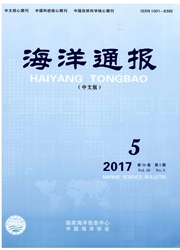

 中文摘要:
中文摘要:
土壤盐渍化一直是困扰莱州湾南岸地区农业生产和发展的主要障碍因子。运用GIS和地统计学方法对夏秋两季不同层位土壤含盐量的时空变异特征及其合理采样数量进行了研究,绘制了土壤含盐量的空间分布图。结果表明:随着置信度降低和相对误差的增大,采样数目逐渐减少;各层土壤含盐量具有较大的变异强度;除夏季0~30 cm、30~60 cm和秋季30~60 cm层位具有中等强度空间自相关外,其他各层则表现出强的空间自相关;Kriging插值结果显示不同层位土壤含盐量的空间分布趋势类似,从海边往内陆含盐量逐渐降低,呈带状分布;盐渍化的分布面积较往年有所降低,这对农业生产和发展具有指导意义。
 英文摘要:
英文摘要:
Soil salinization has always been a main barrier to the agricultural production and development in the southern area of the Laizhou Bay.In this paper,the spatio-temporal variability of soil salinity and appropriate sampling quantity at different layers in summer and fall were analyzed by using GIS and geo-statistics.The soil salinity was represented by the spatial distribution maps,and the zoning of salinization plan was discussed.Results indicated that the number of samples decreased along with the reduction of confidence coefficient and the increasing of relative error.The soil salinity at each 1ayer showed great variability.The layers of 0~30 cm,30~60 cm in summer and 30~60 cm layer in autumn showed moderate spatial autocorrelation,while the other layers showed strong spatial autocorrelation.The spatial distribution maps of soil salinity interpolated by Kriging method indicated that the spatial distribution of soil salinity at different layers was similar,and the salt content decreased from the coastal area to inland and presented zonal distribution.Moreover the distribution of salinization area was lower than that in previous years,which has a guidance to the agricultural production and development.
 同期刊论文项目
同期刊论文项目
 同项目期刊论文
同项目期刊论文
 期刊信息
期刊信息
